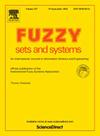A minimum cost and maximum fairness-driven multi-objective optimization consensus model for large-scale group decision-making
IF 3.2
1区 数学
Q2 COMPUTER SCIENCE, THEORY & METHODS
引用次数: 0
Abstract
The rise of social media and e-democracy has driven a paradigm shift in decision-making, notably reflected in the changing ways of public participation and policymaking within decision-making processes. The increased focus on fairness and efficiency not only complicates the consensus-building process among diverse interests and perspectives, but also significantly adds to the complexity of decision-making and its implementation. In this context, balancing the interests of all parties while ensuring fairness and improving decision-making effectiveness becomes crucial. To address these challenges, this study develops a multi-objective optimization consensus framework for large-scale group decision-making (LSGDM) that integrates the interests of decision-makers (DMs) and a moderator, providing a more comprehensive tool. Specifically, this study first designs a DM weight determination method based on structural hole theory within fuzzy social networks. The proposed DM weight determination method effectively leverages the flexibility of fuzzy social networks and the comprehensiveness of structural hole theory to enhance the accuracy and reliability of weight assignment. Building on this, a novel clustering method based on the maximum group consensus level is developed, taking into account the varying importance of different DMs. Furthermore, a minimum cost and maximum fairness-driven multi-objective optimization LSGDM consensus model, referred to as MCMF-MO-LSGDM, is explored in this study. Finally, the utility and superiority of the constructed model are confirmed through comparative analysis and simulation experiments against existing related works.
用于大规模群体决策的最小成本和最大公平性驱动的多目标优化共识模型
社交媒体和电子民主的兴起推动了决策范式的转变,主要体现在决策过程中公众参与和决策方式的变化。对公平和效率的日益重视不仅使不同利益和观点之间建立共识的过程复杂化,而且大大增加了决策及其实施的复杂性。在这种情况下,在确保公平和提高决策效率的同时平衡各方利益就变得至关重要。为了应对这些挑战,本研究开发了一个用于大规模群体决策(LSGDM)的多目标优化共识框架,该框架整合了决策者(DMs)和主持人的利益,提供了一个更全面的工具。具体而言,本研究首先设计了一种基于模糊社会网络中结构洞理论的 DM 权重确定方法。所提出的 DM 权重确定方法有效地利用了模糊社会网络的灵活性和结构洞理论的全面性,提高了权重分配的准确性和可靠性。在此基础上,考虑到不同 DM 的重要性不同,提出了一种基于最大群体共识水平的新型聚类方法。此外,本研究还探索了一种最小成本和最大公平性驱动的多目标优化 LSGDM 共识模型,简称为 MCMF-MO-LSGDM。最后,通过与现有相关著作的对比分析和模拟实验,证实了所构建模型的实用性和优越性。
本文章由计算机程序翻译,如有差异,请以英文原文为准。
求助全文
约1分钟内获得全文
求助全文
来源期刊

Fuzzy Sets and Systems
数学-计算机:理论方法
CiteScore
6.50
自引率
17.90%
发文量
321
审稿时长
6.1 months
期刊介绍:
Since its launching in 1978, the journal Fuzzy Sets and Systems has been devoted to the international advancement of the theory and application of fuzzy sets and systems. The theory of fuzzy sets now encompasses a well organized corpus of basic notions including (and not restricted to) aggregation operations, a generalized theory of relations, specific measures of information content, a calculus of fuzzy numbers. Fuzzy sets are also the cornerstone of a non-additive uncertainty theory, namely possibility theory, and of a versatile tool for both linguistic and numerical modeling: fuzzy rule-based systems. Numerous works now combine fuzzy concepts with other scientific disciplines as well as modern technologies.
In mathematics fuzzy sets have triggered new research topics in connection with category theory, topology, algebra, analysis. Fuzzy sets are also part of a recent trend in the study of generalized measures and integrals, and are combined with statistical methods. Furthermore, fuzzy sets have strong logical underpinnings in the tradition of many-valued logics.
 求助内容:
求助内容: 应助结果提醒方式:
应助结果提醒方式:


